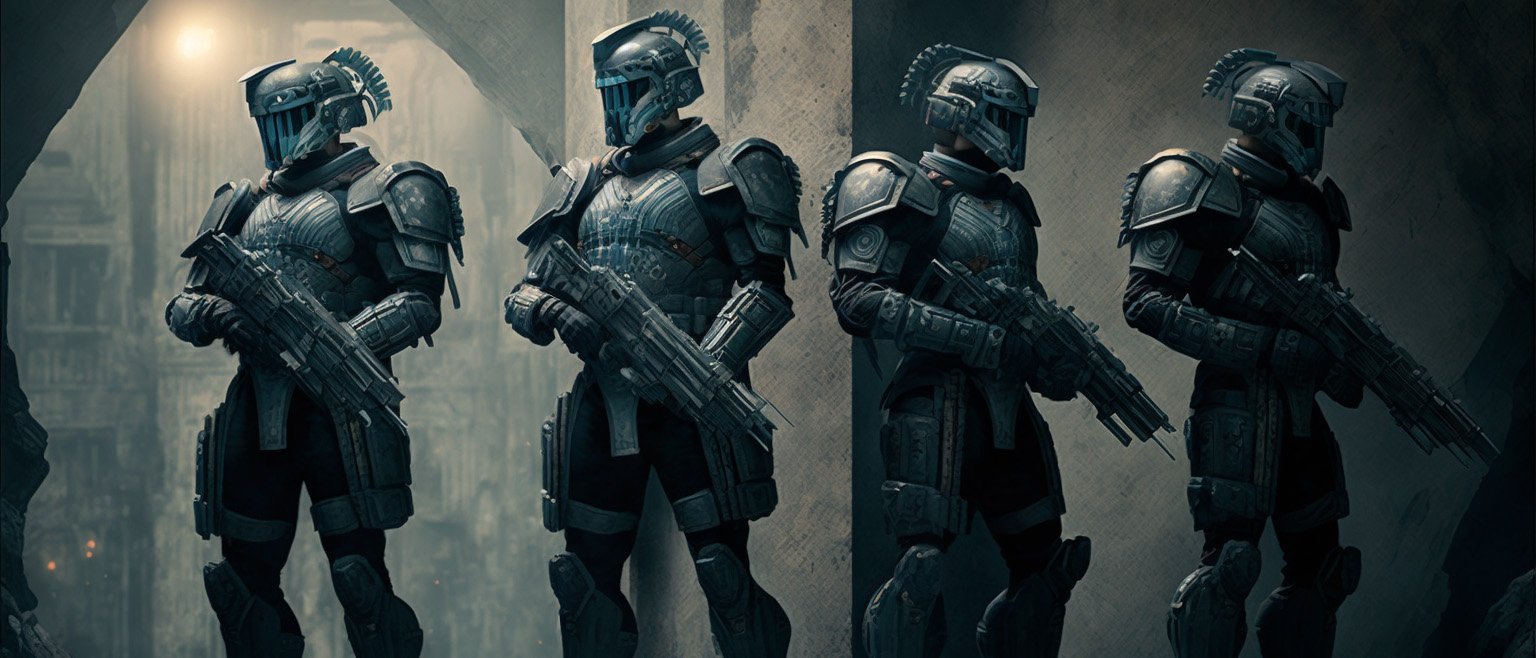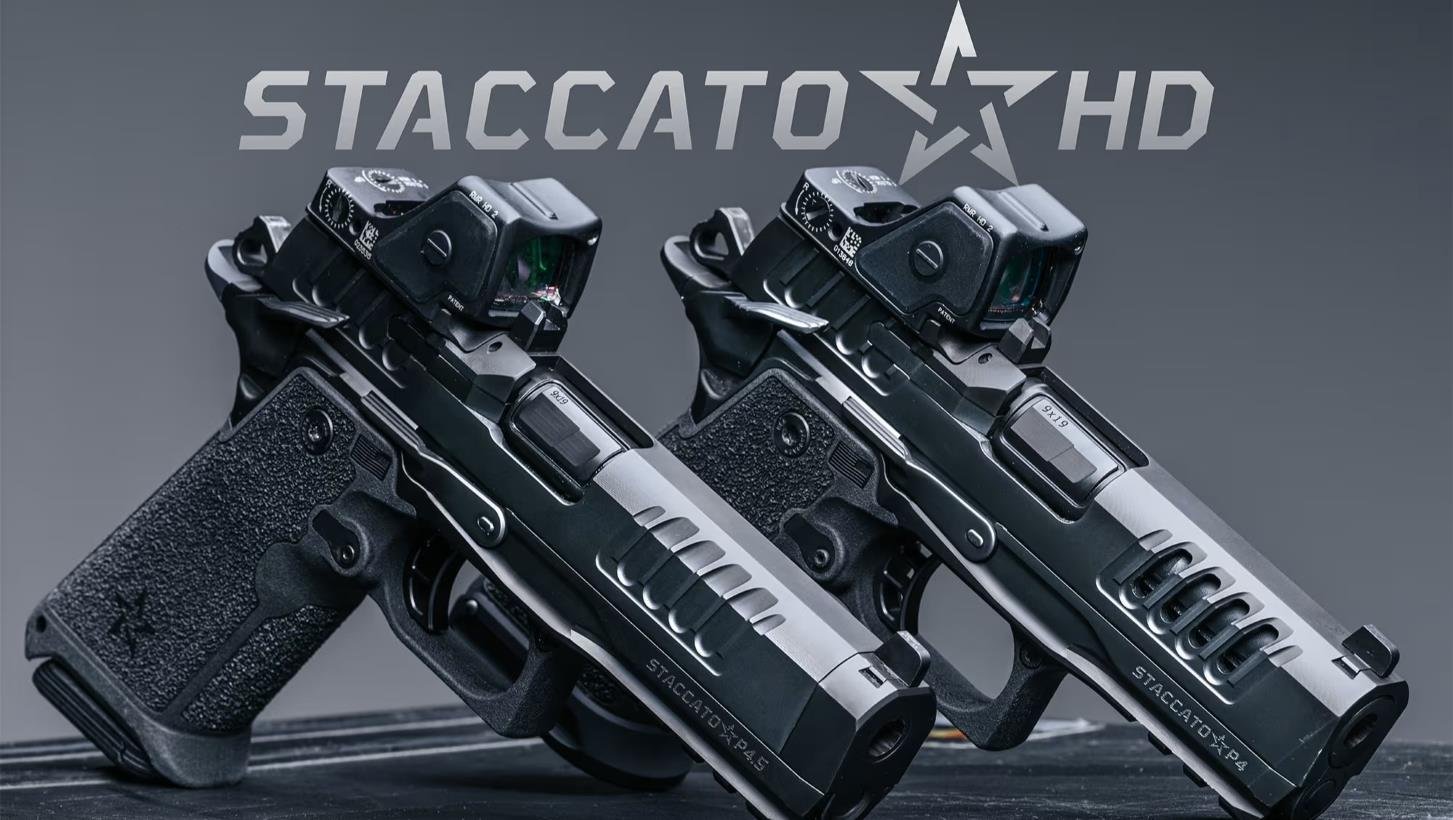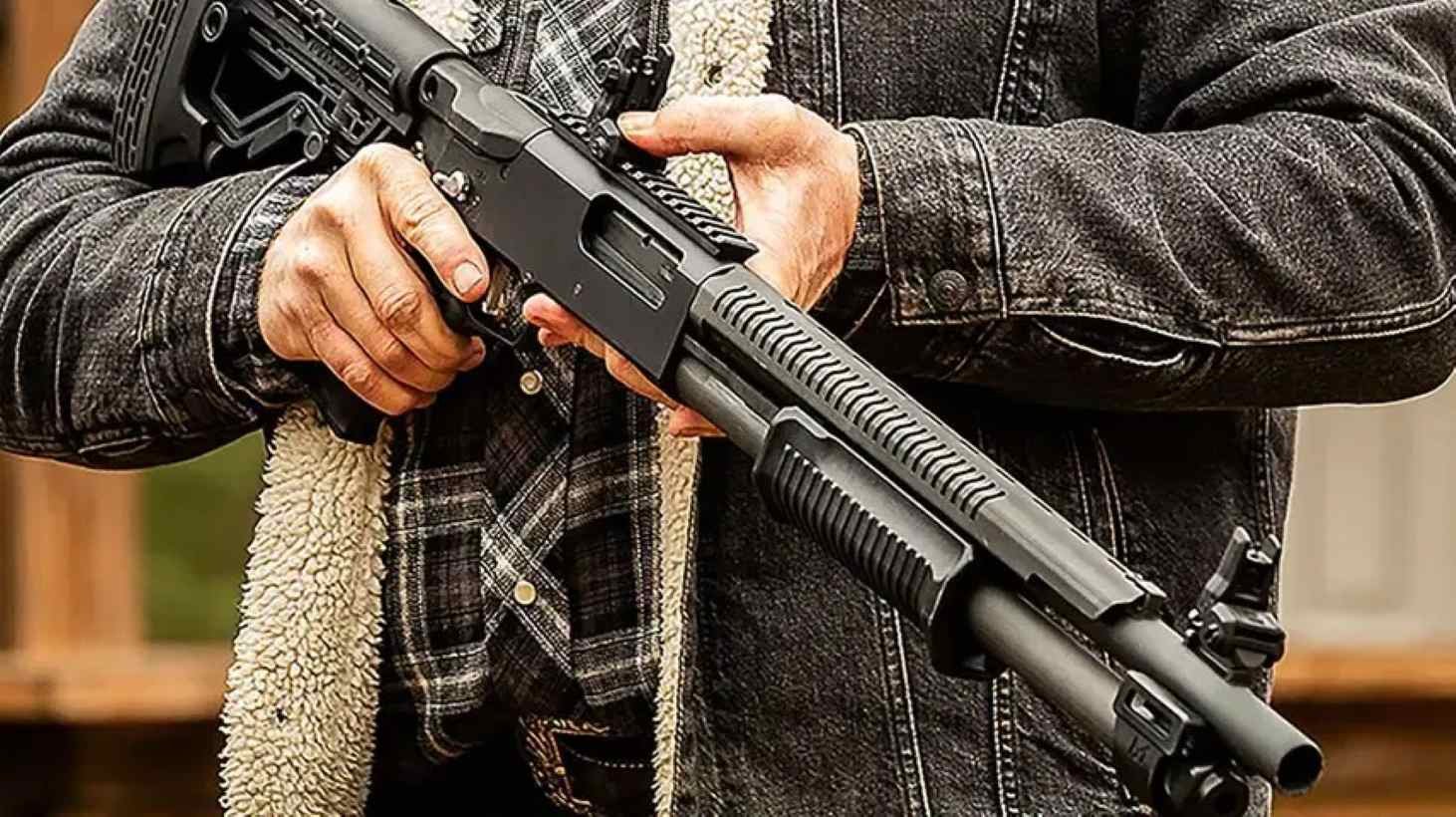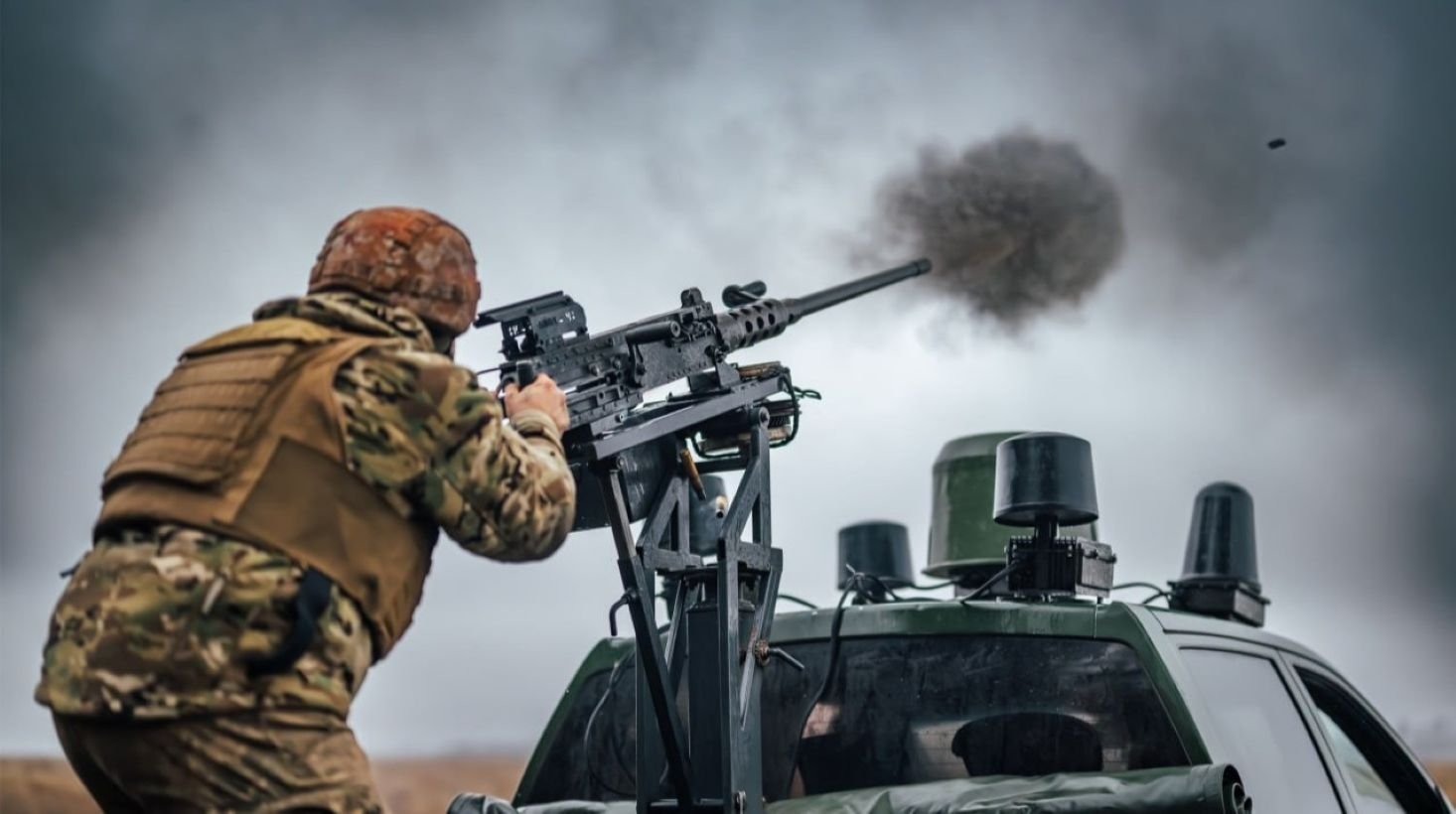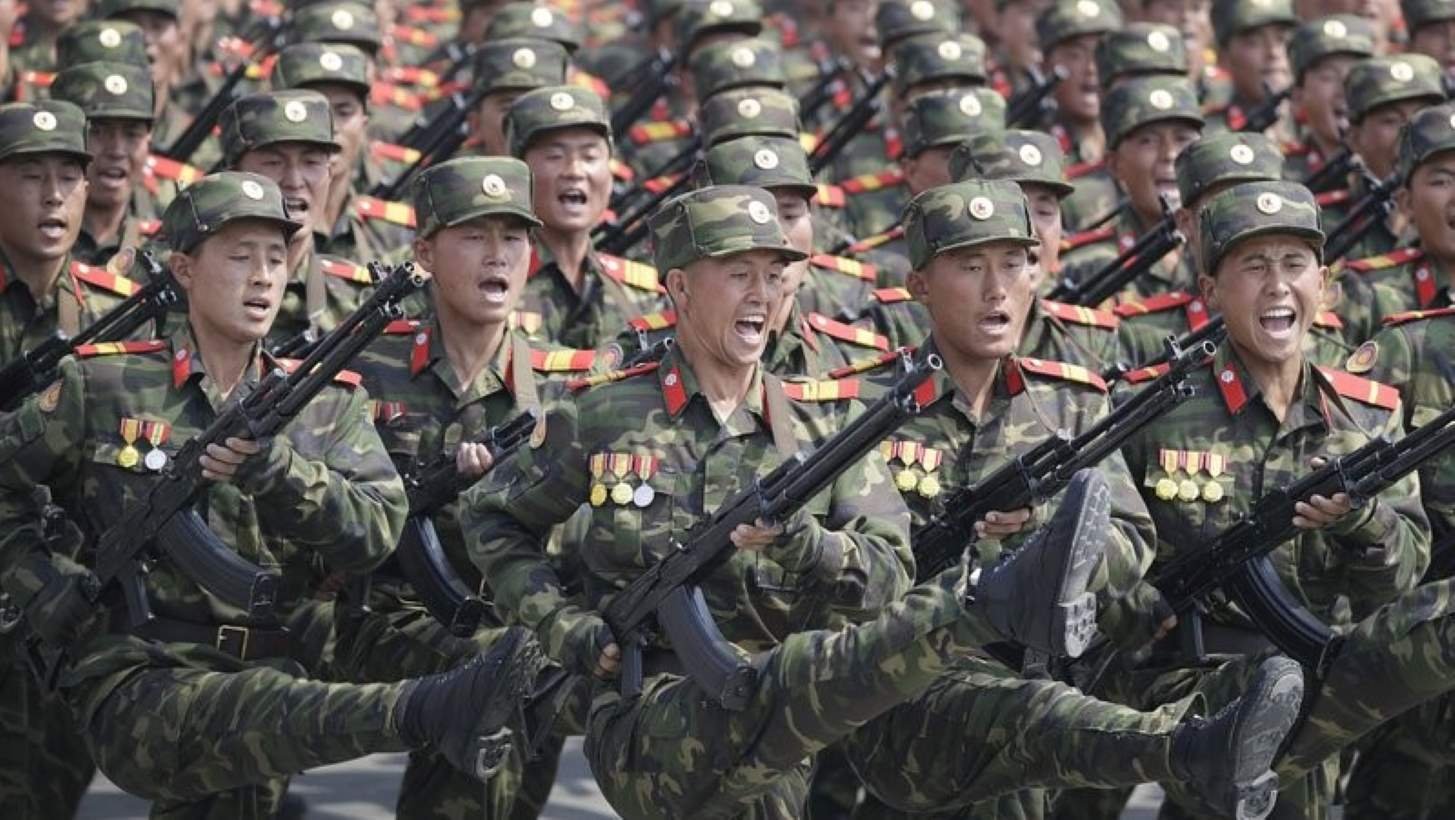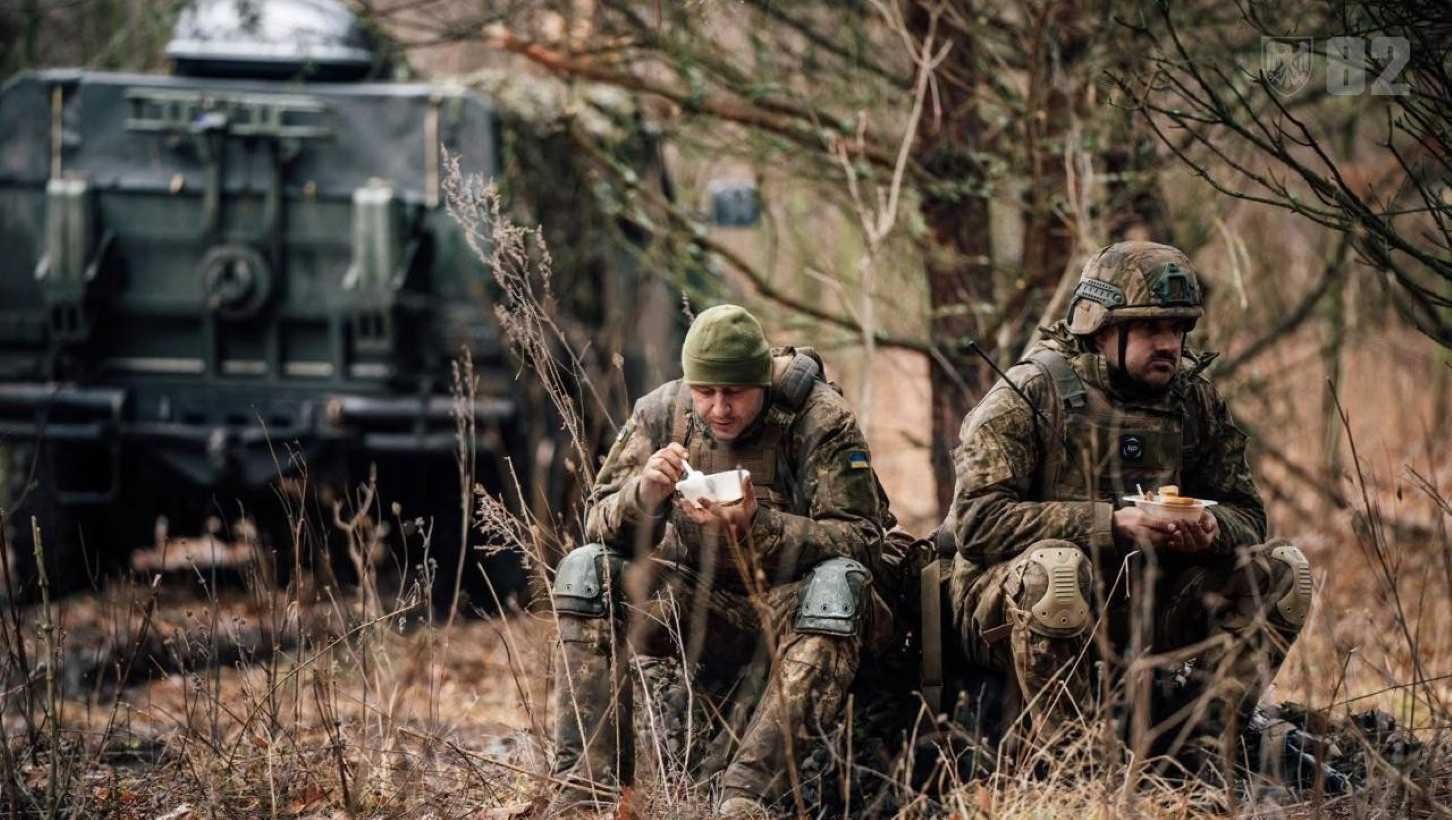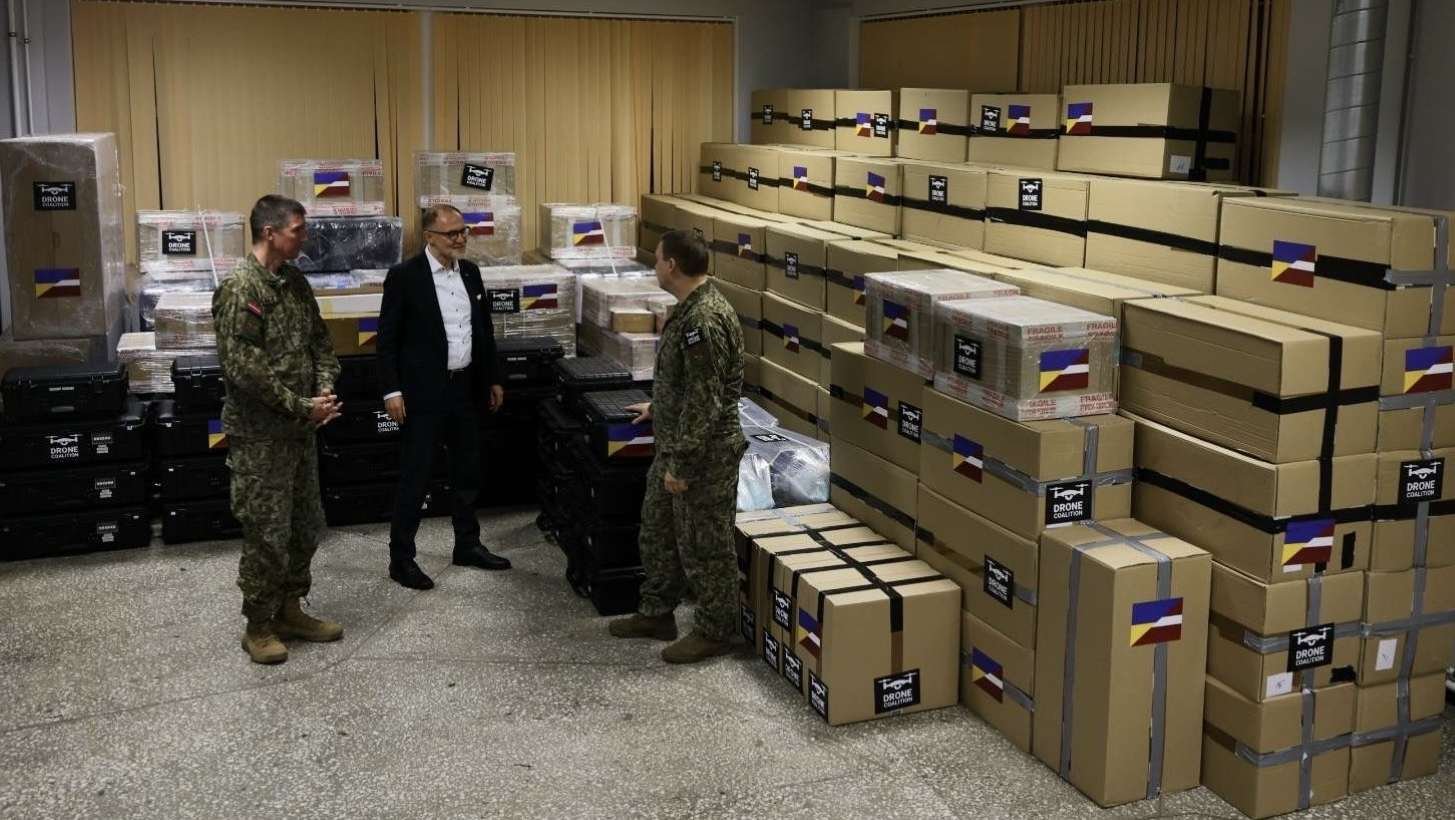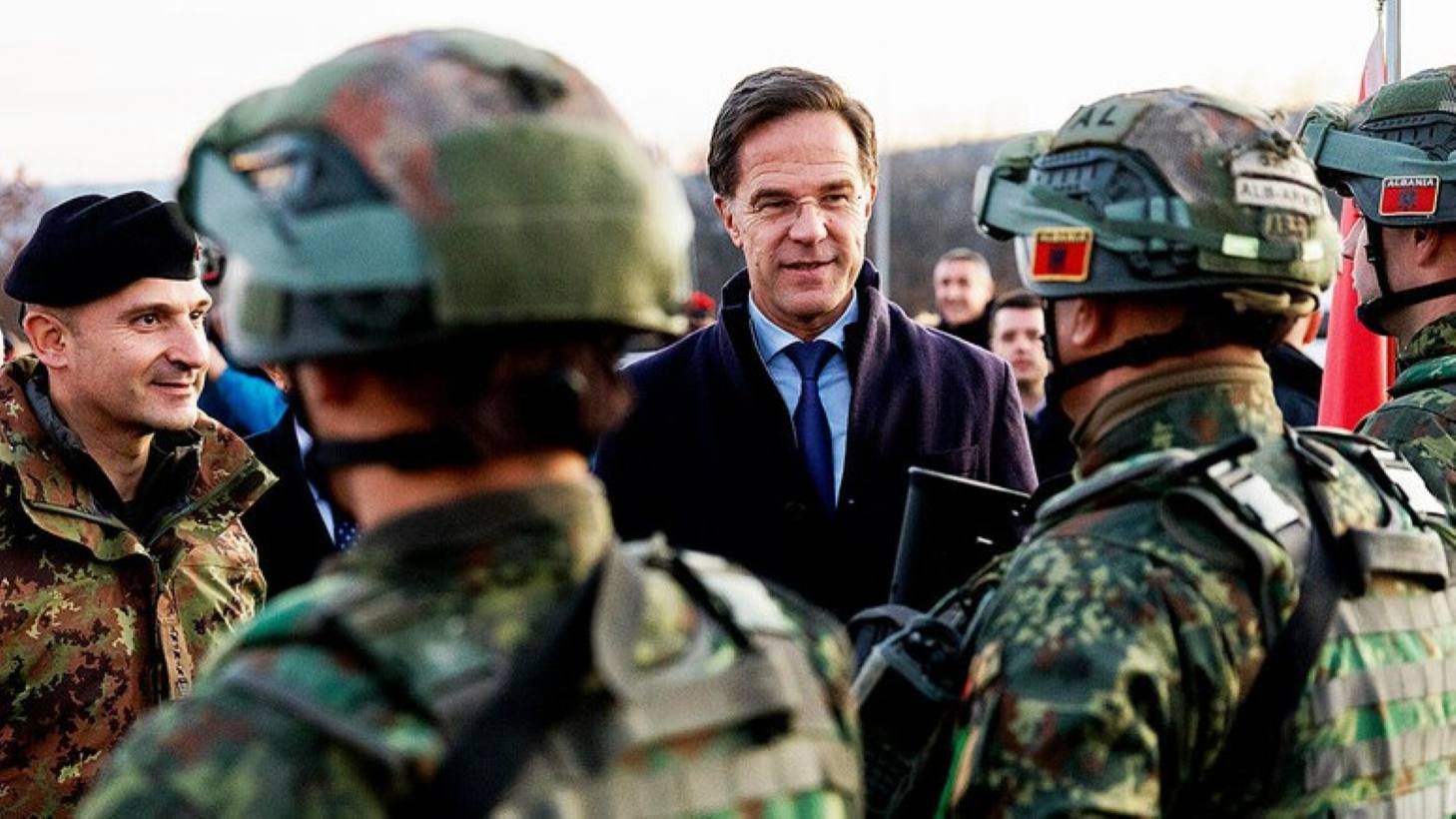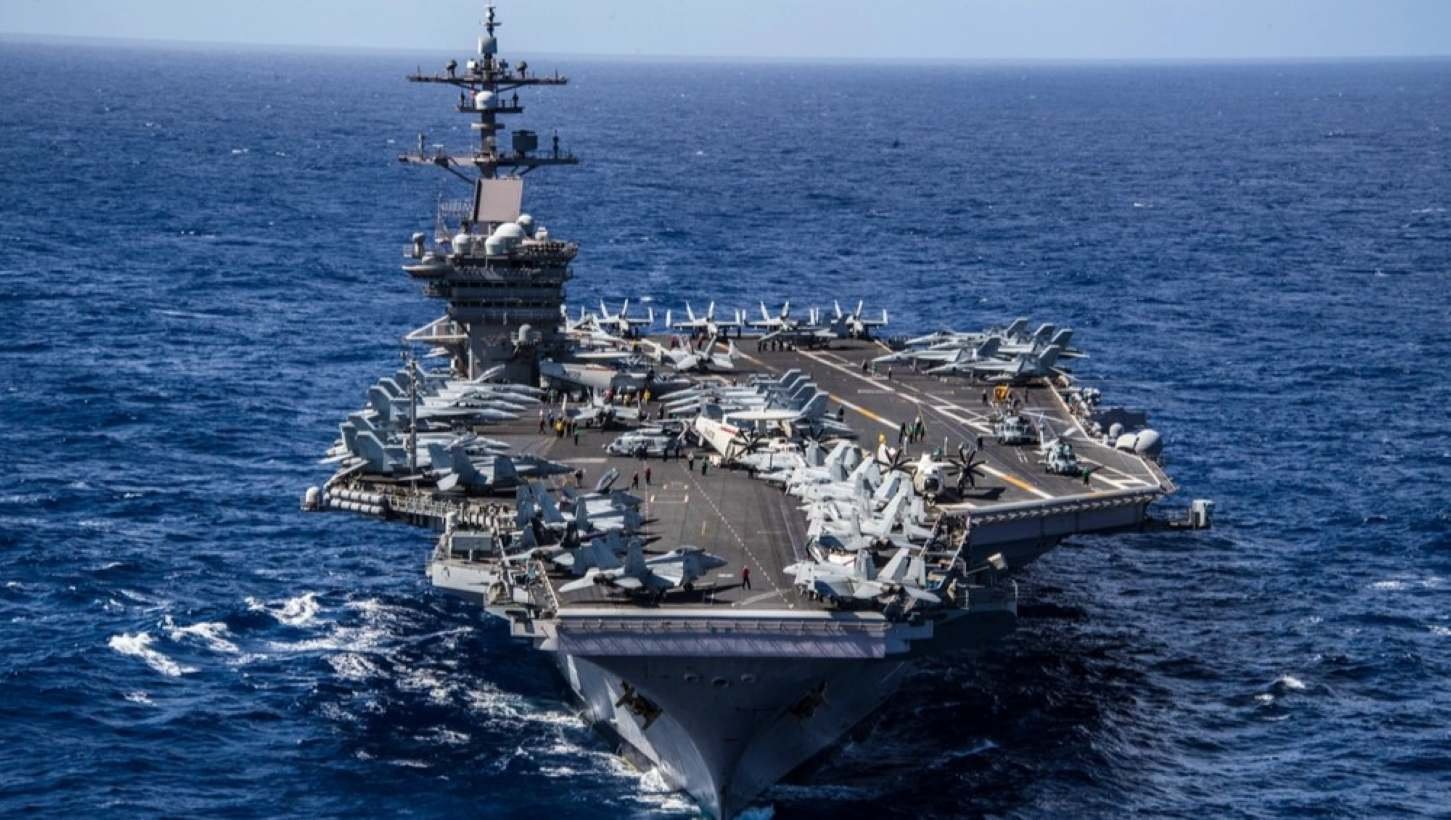-
Posts
790 -
Joined
-
Last visited
Content Type
Profiles
Uncrowned Armory News
Prepping Cookbook
Conspiracy Theories
Uncrowned Tactical Sports News
Prepping
Forums
Events
Everything posted by Uncrowned Guard
-
$5.2 Billion Pact to Enrich Israeli Air Defense Backed by US Aid Package The Israeli Defense Ministry affirmed on Thursday that a new deal, enabled by American funding, will bring essential upgrades to the layered defense system protecting Israel from airborne threats. Rafael Advanced Defense Systems is the primary beneficiary of the $5.2 billion contract - a pioneering agreement fostered through a U.S. aid scheme sanctioned by Congress the prior year. The cutting-edge Iron Dome and David's Sling deterrent systems are set to be reinforced through the contract. The deal, revealed on X platform, previously recognized as Twitter, additionally encompasses work on Iron Beam, a laser scheme presently being built by Israel to counter missile attacks. This agreement emerges in the backdrop of current ceasefire discussions with Hamas to halt the ongoing conflict in Gaza. The Remarkable Role of the Iron Dome and Related Defense Systems The Iron Dome is specifically engineered to thwart short and medium-range rocket, missile, and drone attacks. The Defense Ministry noted its "exceptional performance" during the latest conflict with Hamas. The U.S. has played a significant role in the creation of the Iron Dome, in addition to supporting the production and development of the Arrow Weapon System and David’s Sling, both aimed at neutralizing medium to long-range missiles. High Value Achievements of the US-Israeli Defense Partnership Maj. Gen. Eyal Zamir, Director General of the Israeli Defense Ministry, conveyed gratitude to the United States, attributing the viability of the contract to the aid package they supplied. The defense system enhancement is part of a more extensive $8.7 billion U.S. aid package granted to Israel in the previous Autumn to aid its continuous military initiatives. These defense systems remain crucial in combatting onslaughts from Iran-backed Houthi rebels in Yemen. In a show of continued collaboration, U.S. Defense Secretary Lloyd Austin deployed a Terminal High Altitude Area Defense (THAAD) missile battery and a team of military personnel last October to assist Israel against incoming missiles. View full article
-
- us-israel defense partnership
- iron dome
- (and 3 more)
-
The Staccato HD: Innovation in 2011 Pistols Staccato has recently unveiled its highly anticipated product: the innovative and technologically advanced Staccato HD. This next-level edition of the 2011 platform has been developed based on valuable insights from elite law enforcement and government customers and tested extensively to endure the toughest environments and conditions. Featuring a Suite of Performance Upgrades The Staccato HD, built on a chassis of substantial performance enhancements both inside and out, offers an even more refined handling experience. One of the standout features of this new pistol range is its compatibility with the readily available Glock-pattern magazines. This characteristic ensures an efficient, affordable, and easily available ammunition source, making the Staccato HD series a seamless addition to law enforcement and government equipment rosters. Modifications to the grip have resulted in a slimmer, more ergonomic experience, including a higher beavertail and a larger trigger guard. Notably, all fire controls on this line will be fully ambidextrous, offering a perfectly mirrored manual-of-arms for either hand. The HD line also showcases a revamped HOST system for direct-mounting red dot optics, allowing for easy dot acquisition and smaller backup iron sights. Introducing the Staccato HD P4 and P4.5 At the heart of the HD line is the Staccato HD P4. This model is based heavily on feedback from elite government customers and is built to meet the preferences of both professionals and armed citizens. The dimensions, weight, and general specifications of the Staccato HD P4 ensure it is a top-tier product in its category. Looking forward to the spring of 2025, Staccato will be launching the HD P4.5. This model extends the success of the P4 by featuring a unique 4.5-inch sight block barrel. Benefits included reduced muzzle flip and a shortened 4-inch slide for faster cycle time. Customizable Upgrade Packages Available For those looking to add a personal touch or seeking advanced refinement, Staccato offers two upgrade packages for their HD pistols: the HD Preferred and the HD Premium. Upgrades within these packages range from a DLC barrel to an upgraded Trijicon front sight and additional magazines. The Staccato HD line will be available on January 28th for purchase through their website and at select Staccato dealers. With its combination of proven performance enhancements, its roots in extensive feedback from elite forces, and room for further customization, the Staccato HD series is a promising new entry in the world of 2011 pistols.
-
- staccato hd
- 2011 pistols
- (and 3 more)
-
The Staccato HD: Innovation in 2011 Pistols Staccato has recently unveiled its highly anticipated product: the innovative and technologically advanced Staccato HD. This next-level edition of the 2011 platform has been developed based on valuable insights from elite law enforcement and government customers and tested extensively to endure the toughest environments and conditions. Featuring a Suite of Performance Upgrades The Staccato HD, built on a chassis of substantial performance enhancements both inside and out, offers an even more refined handling experience. One of the standout features of this new pistol range is its compatibility with the readily available Glock-pattern magazines. This characteristic ensures an efficient, affordable, and easily available ammunition source, making the Staccato HD series a seamless addition to law enforcement and government equipment rosters. Modifications to the grip have resulted in a slimmer, more ergonomic experience, including a higher beavertail and a larger trigger guard. Notably, all fire controls on this line will be fully ambidextrous, offering a perfectly mirrored manual-of-arms for either hand. The HD line also showcases a revamped HOST system for direct-mounting red dot optics, allowing for easy dot acquisition and smaller backup iron sights. Introducing the Staccato HD P4 and P4.5 At the heart of the HD line is the Staccato HD P4. This model is based heavily on feedback from elite government customers and is built to meet the preferences of both professionals and armed citizens. The dimensions, weight, and general specifications of the Staccato HD P4 ensure it is a top-tier product in its category. Looking forward to the spring of 2025, Staccato will be launching the HD P4.5. This model extends the success of the P4 by featuring a unique 4.5-inch sight block barrel. Benefits included reduced muzzle flip and a shortened 4-inch slide for faster cycle time. Customizable Upgrade Packages Available For those looking to add a personal touch or seeking advanced refinement, Staccato offers two upgrade packages for their HD pistols: the HD Preferred and the HD Premium. Upgrades within these packages range from a DLC barrel to an upgraded Trijicon front sight and additional magazines. The Staccato HD line will be available on January 28th for purchase through their website and at select Staccato dealers. With its combination of proven performance enhancements, its roots in extensive feedback from elite forces, and room for further customization, the Staccato HD series is a promising new entry in the world of 2011 pistols. View full article
-
- staccato hd
- 2011 pistols
- (and 3 more)
-

Springfield Armory Unveils the 1911 DS Prodigy Compact
Uncrowned Guard posted an article in Firearms
Introducing the 1911 DS Prodigy Compact from Springfield Armory In a landmark announcement, Springfield Armory has launched a brand-new compact firearm - the 1911 DS Prodigy Compact in 9mm. Crafted with care, the Prodigy Compact heightens the 1911 platform's legacy by presenting two sizes - 3.5” and 4.25” - along with increasing the capacity to a double-stack and integrating carry-driven features. Distinctive Design for Optimal Performance The Prodigy Compact is meticulously configured around a flush-fitting, double-stack magazine. Despite the firearm's slim design for user-friendly gripping, it can efficiently house 15 rounds of 9mm ammunition. Two magazines come as a standard provision with both variants of the gun. For those who value concealed carry and self-defense, the innovative features of this firearm serve the purpose. A tritium front sight post is incorporated for improved visibility under low-light conditions. This alignment complements a serrated black U-notch rear sight unit. Importantly, the firearms are furnished with AOS (Agency Optic System) plates exclusively designed for the 1911 DS. Advanced Features for Seamless Use The AOS plate, machined from billet steel, is tailored to provide the appropriate optic height to ensure an intuitive sight picture and instant target acquisition. It is also equipped with an integral rear sight. A HEX Dragonfly compatible plate and a standard cover plate are shipped together with the Prodigy, and additional optic-specific plates can be procured through the Springfield Armory Store. In terms of weight, the Prodigy Compacts score high on the usability scale, with the 3.5” model weighing 25.5 oz. and its 4.25” counterpart 29 oz. This has been made possible with the integration of polymer grip modules into the billet machined 7075-T6 aluminum frame. These compact and lightweight carry concealed weapons (CCW) also feature slides made from forged carbon steel and match-grade bull barrels of forged stainless steel. Comfort and Durability for Everyday Carrying The Prodigy Compacts have been designed with an ambidextrous safety mechanism, recontoured hammers, and beavertail grips that cut down on bulk while keeping full functionality intact. To enhance corrosion resistance, the firearms boast a black Cerakote finish on metal parts, complementing the black polymer grip module. The barrels have been given a black DLC finish. Springfield Armory's Vice President of Marketing, Steve Kramer, expressed his excitement about the release of these compact variants of the popular 1911 DS Prodigy. Kramer stated that the new Prodigy Compact's mix of a double-stack capacity, ease of carrying, and the 1911’s dynamic shooting traits make it an enticing option for EDC enthusiasts. A Masterful Blend of Tradition and Innovation Priced at $1,549 for all variants, the 1911 DS Prodigy Compacts incorporate beloved characteristics of the 1911 legacy and marry them with a modern capacity to offer unmatched functionality suitable for day-to-day carrying. For the 1911 DS Prodigy 3.5” Compact AOS (PH9115AOS, 706397969080), and the 1911 DS Prodigy 4.25” Compact AOS (PH9116AOS, 706397969073), each model carries the same price tag of $1,549 MSRP, reinforcing Springfield Armory's commitment to providing quality and value in their offerings.-
- springfield armory
- 1911 ds prodigy compact
- (and 3 more)
-
Introducing the 1911 DS Prodigy Compact from Springfield Armory In a landmark announcement, Springfield Armory has launched a brand-new compact firearm - the 1911 DS Prodigy Compact in 9mm. Crafted with care, the Prodigy Compact heightens the 1911 platform's legacy by presenting two sizes - 3.5” and 4.25” - along with increasing the capacity to a double-stack and integrating carry-driven features. Distinctive Design for Optimal Performance The Prodigy Compact is meticulously configured around a flush-fitting, double-stack magazine. Despite the firearm's slim design for user-friendly gripping, it can efficiently house 15 rounds of 9mm ammunition. Two magazines come as a standard provision with both variants of the gun. For those who value concealed carry and self-defense, the innovative features of this firearm serve the purpose. A tritium front sight post is incorporated for improved visibility under low-light conditions. This alignment complements a serrated black U-notch rear sight unit. Importantly, the firearms are furnished with AOS (Agency Optic System) plates exclusively designed for the 1911 DS. Advanced Features for Seamless Use The AOS plate, machined from billet steel, is tailored to provide the appropriate optic height to ensure an intuitive sight picture and instant target acquisition. It is also equipped with an integral rear sight. A HEX Dragonfly compatible plate and a standard cover plate are shipped together with the Prodigy, and additional optic-specific plates can be procured through the Springfield Armory Store. In terms of weight, the Prodigy Compacts score high on the usability scale, with the 3.5” model weighing 25.5 oz. and its 4.25” counterpart 29 oz. This has been made possible with the integration of polymer grip modules into the billet machined 7075-T6 aluminum frame. These compact and lightweight carry concealed weapons (CCW) also feature slides made from forged carbon steel and match-grade bull barrels of forged stainless steel. Comfort and Durability for Everyday Carrying The Prodigy Compacts have been designed with an ambidextrous safety mechanism, recontoured hammers, and beavertail grips that cut down on bulk while keeping full functionality intact. To enhance corrosion resistance, the firearms boast a black Cerakote finish on metal parts, complementing the black polymer grip module. The barrels have been given a black DLC finish. Springfield Armory's Vice President of Marketing, Steve Kramer, expressed his excitement about the release of these compact variants of the popular 1911 DS Prodigy. Kramer stated that the new Prodigy Compact's mix of a double-stack capacity, ease of carrying, and the 1911’s dynamic shooting traits make it an enticing option for EDC enthusiasts. A Masterful Blend of Tradition and Innovation Priced at $1,549 for all variants, the 1911 DS Prodigy Compacts incorporate beloved characteristics of the 1911 legacy and marry them with a modern capacity to offer unmatched functionality suitable for day-to-day carrying. For the 1911 DS Prodigy 3.5” Compact AOS (PH9115AOS, 706397969080), and the 1911 DS Prodigy 4.25” Compact AOS (PH9116AOS, 706397969073), each model carries the same price tag of $1,549 MSRP, reinforcing Springfield Armory's commitment to providing quality and value in their offerings. View full article
-
- springfield armory
- 1911 ds prodigy compact
- (and 3 more)
-
Ukraine Launches 'Massive' Strike on Russian Military and Industrial Facilities The General Staff of Ukraine’s Armed Forces reported a severe overnight assault on Russian military and industrial centers on January 14. The attack, described as the most extensive of its kind, spanned an estimated 1,100 kilometers (around 620 miles). Critical targets included chemical plants, refineries, and ammunition depots at the Engels airbase, according to an insider from Ukraine's Security Service (SBU). The SBU source confirmed to the Kyiv Independent that these coordinated strikes aim to cripple Russia's capacity to wage war on Ukrainian soil. Drone Strikes Across Russian Regions A series of Ukrainian drone strikes reportedly targeted areas including Saratov, Voronezh, Orel oblasts, and Tatarstan. However, the Russian Defense Ministry declined to release exact figures on the number of drones involved in the operation. Dmitry Milyaev, the governor of Russia's Tula region, disclosed a "massive drone attack" via a Telegram post. Milyaev stated that at least 17 drones took part in the assault. Despite damage to vehicles and structures due to drone debris in Aleksin, there were thankfully no reported casualties. Engels Airfield and Industrial Facilities Hit Important military installations and industrial facilities have been heavily impacted by the assault. Governor Roman Busargin of Saratov and Engels confirmed that two industrial facilities received significant damage due to drone strikes. The strikes included one on the Kristal oil facility in Engels, which had been reeling from a fiery incident caused by an earlier attack on January 8. The Engels airfield, over 750 kilometers from Ukraine's closest controlled territory, is believed to have suffered damage to its ammunition depots. These depots supposedly contained FAB glide bombs, KAB bombs, and cruise missiles. Nearby, the Saratov oil refinery was also reportedly engulfed in flames. The airfield is known for housing three different types of Russian strategic bombers—the Tupolev Tu-95, Tu-22, and Tu-160. These bombers are known for frequently launching missile strikes on Ukrainian cities. Due to the ongoing threat from drone strikes, Mikhail Isayev, the acting head of the Engels district, announced that schools in the city would transition to remote learning. Ukraine’s Unmanned Systems Forces Confirm Strike After strikes damaged a chemical plant in the town of Seltso, situated near Bryansk, Ukraine's Unmanned Systems Forces confirmed their involvement. The plant was reported to produce gunpowder, explosives, and missile fuel components vital to Russian military operations. The drone-led assault was a significant distraction to Russian air defense, enabling missiles to hit primary targets. Following the missile strike, long-range drones reportedly destroyed substations and other critical infrastructure. In Tatarstan's capital, Kazan, a drone strike ignited a gas tank at a fuel facility. The local authorities confirmed that the fire, which happened around 1,000 kilometers from the Ukrainian border, caused no significant damage. Impact on Russia's Oil Industry These concerted attacks are a part of Ukraine's strategic plan to disrupt supply chains crucial to Russia's military efforts. Notably, Ukraine's forces have increasingly targeted Russia’s oil industry, ammunition depots, and airfields. These systematic strikes aim to cripple Russia's war apparatus, striking deeply into its territory and are part of Ukraine's ongoing efforts to undermine Russia's ability to sustain a full-scale invasion. Fossil fuel exports, which the strikes have significantly impaired, remain a significant revenue source for the Kremlin's military operations.
-
Ukraine Launches 'Massive' Strike on Russian Military and Industrial Facilities The General Staff of Ukraine’s Armed Forces reported a severe overnight assault on Russian military and industrial centers on January 14. The attack, described as the most extensive of its kind, spanned an estimated 1,100 kilometers (around 620 miles). Critical targets included chemical plants, refineries, and ammunition depots at the Engels airbase, according to an insider from Ukraine's Security Service (SBU). The SBU source confirmed to the Kyiv Independent that these coordinated strikes aim to cripple Russia's capacity to wage war on Ukrainian soil. Drone Strikes Across Russian Regions A series of Ukrainian drone strikes reportedly targeted areas including Saratov, Voronezh, Orel oblasts, and Tatarstan. However, the Russian Defense Ministry declined to release exact figures on the number of drones involved in the operation. Dmitry Milyaev, the governor of Russia's Tula region, disclosed a "massive drone attack" via a Telegram post. Milyaev stated that at least 17 drones took part in the assault. Despite damage to vehicles and structures due to drone debris in Aleksin, there were thankfully no reported casualties. Engels Airfield and Industrial Facilities Hit Important military installations and industrial facilities have been heavily impacted by the assault. Governor Roman Busargin of Saratov and Engels confirmed that two industrial facilities received significant damage due to drone strikes. The strikes included one on the Kristal oil facility in Engels, which had been reeling from a fiery incident caused by an earlier attack on January 8. The Engels airfield, over 750 kilometers from Ukraine's closest controlled territory, is believed to have suffered damage to its ammunition depots. These depots supposedly contained FAB glide bombs, KAB bombs, and cruise missiles. Nearby, the Saratov oil refinery was also reportedly engulfed in flames. The airfield is known for housing three different types of Russian strategic bombers—the Tupolev Tu-95, Tu-22, and Tu-160. These bombers are known for frequently launching missile strikes on Ukrainian cities. Due to the ongoing threat from drone strikes, Mikhail Isayev, the acting head of the Engels district, announced that schools in the city would transition to remote learning. Ukraine’s Unmanned Systems Forces Confirm Strike After strikes damaged a chemical plant in the town of Seltso, situated near Bryansk, Ukraine's Unmanned Systems Forces confirmed their involvement. The plant was reported to produce gunpowder, explosives, and missile fuel components vital to Russian military operations. The drone-led assault was a significant distraction to Russian air defense, enabling missiles to hit primary targets. Following the missile strike, long-range drones reportedly destroyed substations and other critical infrastructure. In Tatarstan's capital, Kazan, a drone strike ignited a gas tank at a fuel facility. The local authorities confirmed that the fire, which happened around 1,000 kilometers from the Ukrainian border, caused no significant damage. Impact on Russia's Oil Industry These concerted attacks are a part of Ukraine's strategic plan to disrupt supply chains crucial to Russia's military efforts. Notably, Ukraine's forces have increasingly targeted Russia’s oil industry, ammunition depots, and airfields. These systematic strikes aim to cripple Russia's war apparatus, striking deeply into its territory and are part of Ukraine's ongoing efforts to undermine Russia's ability to sustain a full-scale invasion. Fossil fuel exports, which the strikes have significantly impaired, remain a significant revenue source for the Kremlin's military operations. View full article
-

Mossberg Releases 590R and 590RM Shotguns with Rotary Safety Selector
Uncrowned Guard posted an article in Firearms
Mossberg Unveils Next-Level Pump-Action Shotguns: The 590R and 590RM with Rotary Safety Selector Mossberg, a pioneer in pump-action shotgun manufacturing, has introduced a new breed of its acclaimed 590 series - the 590R and 590RM (Mag Fed) models. Renowned for its reliability, superior performance, and range of configurations, the Mossberg 590 series has set the standard for duty and home defense shotguns for years. The evolution of this supreme tactical platform now presents gun enthusiasts with groundbreaking features like a user-friendly redesigned forend, an integrated barrel/single heat shield, and most notably, an ambidextrous rotary safety selector. Available in four unique models, including two standard models and two mag-fed versions, the 590R keeps its predecessor's key features while being the first in the market to feature double-stack magazines for pump-action shotguns. Core Features of the 590R and Improved Design for Ease of Maintenance Boasting the universally revered features of the 590 platform, including non-binding twin action bars, positive steel-to-steel lock-up, and an anti-jam elevator, this next-generation version offers enhanced features for unprecedented user comfort and accessibility. A versatile clean-out magazine tube with a cap, designed for easy maintenance, added to the dual extractors, aluminum receiver, and drilled and tapped receivers, further elevates the 590R’s status as the ultimate shotgun choice. Mossberg 590RM: The Evolution of the Mag Fed 590M and Key Features Closely following the blueprint of the 2018-introduced 590M Mag Fed, the new 590RM shotgun stands out with its detachable magazine and integral stabilizing ribs. Designed to provide secure lock-up, the ribs directly engage with notches on the receiver, resulting in a sturdy connection. The 590RM, provided with a magazine release button and mounting guide located ahead of the trigger guard, is fully ambidextrous. The shotgun’s detachable magazines are available in 5, 10, 15, and 20-round capacities, offering options for varying individual needs. 590R and 590RM Pump-Action Shotguns: Overview of Key Features The laundry list of features for the 590R and 590RM models includes an ambidextrous, rotary safety selector and a Mossberg-designed stock adjustable to five positions (12 – 15.25 inches). Stock/Base compatibility with other grip designs, a compact ergonomic forend, a 5-inch barrel with a removable heat shield, an enlarged beveled loading port, and an elongated bolt release all contribute to a smooth and personalized shooting experience. Furthermore, the newly introduced models come furnished with a Magpul MOE+ pistol grip, a front M-LOK adapter with dual-sided accessory mounting slots, a flat profile trigger with a smooth, crisp break, and an extended follower for ease of loading (590R only). The icing on the cake is the electroplated internal and external receiver, offering unmatched durability with a smoother finish. The Superior Shotgun Series: Model Details and Pricing The 590R (50762 and 50761) each carry a Manufacturer's Suggested Retail Price of $1,085. The 12-gauge, 3-inch standard versions come standard with an 18.5-inch barrel, a compact forend, an adjustable 5-position stock, a MOE pistol grip, and a Picatinny rail. The 590RM (50213 and 50218) versions, each priced at $1,190, offer a 2.75-inch 12-gauge, magazine-fed pump action. Each model is equipped with an 18.5-inch barrel with an integrated heat shield, a compact forend, a 5-position adjustable stock, and a 10-round magazine. This evolved shotgun series from Mossberg, with cutting-edge features and a design philosophy focusing on ease of use and reliability, is poised to redefine the tactical platform and set the new standard for pump-action shotguns.-
- pump-action shotguns
- mossberg 590 series
- (and 3 more)
-
Mossberg Unveils Next-Level Pump-Action Shotguns: The 590R and 590RM with Rotary Safety Selector Mossberg, a pioneer in pump-action shotgun manufacturing, has introduced a new breed of its acclaimed 590 series - the 590R and 590RM (Mag Fed) models. Renowned for its reliability, superior performance, and range of configurations, the Mossberg 590 series has set the standard for duty and home defense shotguns for years. The evolution of this supreme tactical platform now presents gun enthusiasts with groundbreaking features like a user-friendly redesigned forend, an integrated barrel/single heat shield, and most notably, an ambidextrous rotary safety selector. Available in four unique models, including two standard models and two mag-fed versions, the 590R keeps its predecessor's key features while being the first in the market to feature double-stack magazines for pump-action shotguns. Core Features of the 590R and Improved Design for Ease of Maintenance Boasting the universally revered features of the 590 platform, including non-binding twin action bars, positive steel-to-steel lock-up, and an anti-jam elevator, this next-generation version offers enhanced features for unprecedented user comfort and accessibility. A versatile clean-out magazine tube with a cap, designed for easy maintenance, added to the dual extractors, aluminum receiver, and drilled and tapped receivers, further elevates the 590R’s status as the ultimate shotgun choice. Mossberg 590RM: The Evolution of the Mag Fed 590M and Key Features Closely following the blueprint of the 2018-introduced 590M Mag Fed, the new 590RM shotgun stands out with its detachable magazine and integral stabilizing ribs. Designed to provide secure lock-up, the ribs directly engage with notches on the receiver, resulting in a sturdy connection. The 590RM, provided with a magazine release button and mounting guide located ahead of the trigger guard, is fully ambidextrous. The shotgun’s detachable magazines are available in 5, 10, 15, and 20-round capacities, offering options for varying individual needs. 590R and 590RM Pump-Action Shotguns: Overview of Key Features The laundry list of features for the 590R and 590RM models includes an ambidextrous, rotary safety selector and a Mossberg-designed stock adjustable to five positions (12 – 15.25 inches). Stock/Base compatibility with other grip designs, a compact ergonomic forend, a 5-inch barrel with a removable heat shield, an enlarged beveled loading port, and an elongated bolt release all contribute to a smooth and personalized shooting experience. Furthermore, the newly introduced models come furnished with a Magpul MOE+ pistol grip, a front M-LOK adapter with dual-sided accessory mounting slots, a flat profile trigger with a smooth, crisp break, and an extended follower for ease of loading (590R only). The icing on the cake is the electroplated internal and external receiver, offering unmatched durability with a smoother finish. The Superior Shotgun Series: Model Details and Pricing The 590R (50762 and 50761) each carry a Manufacturer's Suggested Retail Price of $1,085. The 12-gauge, 3-inch standard versions come standard with an 18.5-inch barrel, a compact forend, an adjustable 5-position stock, a MOE pistol grip, and a Picatinny rail. The 590RM (50213 and 50218) versions, each priced at $1,190, offer a 2.75-inch 12-gauge, magazine-fed pump action. Each model is equipped with an 18.5-inch barrel with an integrated heat shield, a compact forend, a 5-position adjustable stock, and a 10-round magazine. This evolved shotgun series from Mossberg, with cutting-edge features and a design philosophy focusing on ease of use and reliability, is poised to redefine the tactical platform and set the new standard for pump-action shotguns. View full article
-
- pump-action shotguns
- mossberg 590 series
- (and 3 more)
-
Ukrainian Special Forces Successfully Counter North Korean Assault Ukraine's Special Operations Forces have successfully thwarted an assault by North Korean troops in Russia's Kursk Oblast, according to the unit's press service. The reported confrontation, which took place on Jan. 13, resulted in the death of 17 North Korean soldiers. North Korean soldiers had been stationed in Kursk Oblast to back Russian resistance against a Ukrainian advance launched on Aug. 6. Despite the escalating conflict, Ukrainian troops have persisted in their efforts, observing their territorial gains as a potential leveraging strategy for future dialogue. The extent of the conflict, while yet to be officially identified, lasted a considerable amount of time, spanning morning until night. Footage capturing the aftermath, released by Ukrainian forces, highlights what appears to be North Korean casualties. Perilous Encounters and High Casualties Amid Clashes As the confrontation drew to a close, Ukrainian forces reportedly confronted one surviving North Korean soldier who attempted but failed, to execute a trap. To evade capture, the soldier allegedly detonated a grenade, resulting in his demise. South Korea's National Intelligence Service (NIS) suggests that the conflict with Ukraine has resulted in significant North Korean casualties, with estimated figures standing at 300 fatalities and 2,700 injuries. This heavy toll is purportedly due to a lack of training in modern warfare techniques, including unsuccessful attempts to counter long-range drone attacks. Allegedly, North Korean soldiers have been coerced into suicide to evade capture by Ukrainian forces, highlighted in claims made by the White House National Security Council spokesperson John Kirby in late December. Kirby suggests that North Korean soldiers captured fear severe punishment for their families if they choose to surrender. Russia Expands its Hold in Eastern Ukraine In another unfolding development, Russia's Defense Ministry announced on Jan. 12 that they have successfully seized the villages of Yantarne in Donetsk Oblast and Kalynove in Kharkiv Oblast, Ukraine. Verification of these claims is ongoing, as Ukraine has not yet commented. As Ukrainian forces grapple with outnumbering and superior firepower, Russia intensifies pressure within eastern Ukraine. The village of Yantarne, located nearly 10 kilometers southeast of the eastern town of Kurakhove, has almost entirely fallen to Russian forces. Reports from Ukraine-based war monitoring website, DeepState, are vague, neither confirming nor denying the reported loss of Yantarne. Conversely, Ukraine's Khortytsia forces have confirmed ongoing clashes in the area. Meanwhile, the northeastern village of Kalynove, a strategic location on the west bank of the Oskil River, has also reportedly come under Russian control. The fall of Kalynove could provide Russian forces a significant advantage, specifically the ability to flank Ukrainian defenders as they maintain a vigilant presence on the Ukraine-held western bank of the river.
-
- ukraine
- north korea
- (and 3 more)
-
Ukrainian Special Forces Successfully Counter North Korean Assault Ukraine's Special Operations Forces have successfully thwarted an assault by North Korean troops in Russia's Kursk Oblast, according to the unit's press service. The reported confrontation, which took place on Jan. 13, resulted in the death of 17 North Korean soldiers. North Korean soldiers had been stationed in Kursk Oblast to back Russian resistance against a Ukrainian advance launched on Aug. 6. Despite the escalating conflict, Ukrainian troops have persisted in their efforts, observing their territorial gains as a potential leveraging strategy for future dialogue. The extent of the conflict, while yet to be officially identified, lasted a considerable amount of time, spanning morning until night. Footage capturing the aftermath, released by Ukrainian forces, highlights what appears to be North Korean casualties. Perilous Encounters and High Casualties Amid Clashes As the confrontation drew to a close, Ukrainian forces reportedly confronted one surviving North Korean soldier who attempted but failed, to execute a trap. To evade capture, the soldier allegedly detonated a grenade, resulting in his demise. South Korea's National Intelligence Service (NIS) suggests that the conflict with Ukraine has resulted in significant North Korean casualties, with estimated figures standing at 300 fatalities and 2,700 injuries. This heavy toll is purportedly due to a lack of training in modern warfare techniques, including unsuccessful attempts to counter long-range drone attacks. Allegedly, North Korean soldiers have been coerced into suicide to evade capture by Ukrainian forces, highlighted in claims made by the White House National Security Council spokesperson John Kirby in late December. Kirby suggests that North Korean soldiers captured fear severe punishment for their families if they choose to surrender. Russia Expands its Hold in Eastern Ukraine In another unfolding development, Russia's Defense Ministry announced on Jan. 12 that they have successfully seized the villages of Yantarne in Donetsk Oblast and Kalynove in Kharkiv Oblast, Ukraine. Verification of these claims is ongoing, as Ukraine has not yet commented. As Ukrainian forces grapple with outnumbering and superior firepower, Russia intensifies pressure within eastern Ukraine. The village of Yantarne, located nearly 10 kilometers southeast of the eastern town of Kurakhove, has almost entirely fallen to Russian forces. Reports from Ukraine-based war monitoring website, DeepState, are vague, neither confirming nor denying the reported loss of Yantarne. Conversely, Ukraine's Khortytsia forces have confirmed ongoing clashes in the area. Meanwhile, the northeastern village of Kalynove, a strategic location on the west bank of the Oskil River, has also reportedly come under Russian control. The fall of Kalynove could provide Russian forces a significant advantage, specifically the ability to flank Ukrainian defenders as they maintain a vigilant presence on the Ukraine-held western bank of the river. View full article
-
- ukraine
- north korea
- (and 3 more)
-
North Korean Casualties in Kursk Oblast: Seoul Cites 3,000 Victims According to South Korea's National Intelligence Service (NIS), approximately 300 North Korean soldiers have been killed and a further 2,700 injured in the Russian region of Kursk Oblast. The NIS released these figures on January 13, with the data being reported by the South Korean news agency, Yonhap. Unfamiliarity With Modern Warfare Behind High Casualties The NIS indicates that the high casualty rate is due to the North Korean soldiers' unfamiliarity with modern warfare techniques. What the NIS termed "futile" attempts to neutralize long-range drones is one such aspect of the lack of understanding on the part of the North Korean military. In the last fall, North Korean soldiers were reportedly positioned in Kursk Oblast to supplement Russian forces, resisting a Ukrainian offensive initiated on August 6. The Ukrainian military has maintained its presence in the region, fortifying its positions for possible future negotiations. Conflicting Accounts of North Korean Losses and POW Reports The recent statement by the NIS is in contrast to Ukrainian President Volodymyr Zelensky's assertion on January 9. Zelensky claimed that North Korean troops fighting alongside the Russian military had incurred 4,000 casualties, inclusive of fatalities and injuries. The NIS further alleged that North Korean soldiers were compelled to commit suicide to prevent being captured by Ukrainian forces. This claim was confirmed on December 27 by White House National Security Council spokesperson John Kirby. He acknowledged that some North Korean soldiers had taken their own lives due to fear of potential reprisals against their families in case of capture. Notably, on January 11, President Zelensky announced the arrest of two North Korean soldiers in Kursk Oblast. These prisoners of war (POWs), believed by the NIS to be members of the Reconnaissance General Bureau, North Korea's military intelligence agency, are now under the umbrella of Ukraine's Security Service (SBU) and are receiving medical treatment. Zelensky shared video footage of the SBU investigating the POWs with the help of Korean translators. One of the detained soldiers expressed a wish to return to North Korea, while the other expressed a desire to stay in Ukraine.
-
- north korea
- kursk oblast
- (and 3 more)
-
North Korean Casualties in Kursk Oblast: Seoul Cites 3,000 Victims According to South Korea's National Intelligence Service (NIS), approximately 300 North Korean soldiers have been killed and a further 2,700 injured in the Russian region of Kursk Oblast. The NIS released these figures on January 13, with the data being reported by the South Korean news agency, Yonhap. Unfamiliarity With Modern Warfare Behind High Casualties The NIS indicates that the high casualty rate is due to the North Korean soldiers' unfamiliarity with modern warfare techniques. What the NIS termed "futile" attempts to neutralize long-range drones is one such aspect of the lack of understanding on the part of the North Korean military. In the last fall, North Korean soldiers were reportedly positioned in Kursk Oblast to supplement Russian forces, resisting a Ukrainian offensive initiated on August 6. The Ukrainian military has maintained its presence in the region, fortifying its positions for possible future negotiations. Conflicting Accounts of North Korean Losses and POW Reports The recent statement by the NIS is in contrast to Ukrainian President Volodymyr Zelensky's assertion on January 9. Zelensky claimed that North Korean troops fighting alongside the Russian military had incurred 4,000 casualties, inclusive of fatalities and injuries. The NIS further alleged that North Korean soldiers were compelled to commit suicide to prevent being captured by Ukrainian forces. This claim was confirmed on December 27 by White House National Security Council spokesperson John Kirby. He acknowledged that some North Korean soldiers had taken their own lives due to fear of potential reprisals against their families in case of capture. Notably, on January 11, President Zelensky announced the arrest of two North Korean soldiers in Kursk Oblast. These prisoners of war (POWs), believed by the NIS to be members of the Reconnaissance General Bureau, North Korea's military intelligence agency, are now under the umbrella of Ukraine's Security Service (SBU) and are receiving medical treatment. Zelensky shared video footage of the SBU investigating the POWs with the help of Korean translators. One of the detained soldiers expressed a wish to return to North Korea, while the other expressed a desire to stay in Ukraine. View full article
-
- north korea
- kursk oblast
- (and 3 more)
-

Biden Boosts Ukraine Defense with $2.47 Billion Aid Push
Uncrowned Guard posted an article in Defense Industry
Biden Administration Unveils Further Security Support for Ukraine The United States Department of Defense (DoD) has announced an increased wave of security aid for Ukraine, aimed at strengthening the nation's defense structure. The initiative is driven by the Presidential Drawdown Authority (PDA) package, valued at approximately $1.25 billion. This package will enhance Ukraine's air defense capacities, artillery munitions, and anti-tank weaponry, responding to the nation's key security challenges. A Comprehensive Aid Package Strengthening Ukraine's Defense System Alongside the PDA package, the DoD has unveiled the Ukraine Security Assistance Initiative (USAI) package, an additional $1.22 billion endeavor, specifically targeted at fortifying Ukraine against Russian hostility. This initiative caters to a myriad of defense sectors, including Unmanned Aerial Systems, air defense, and air-to-ground capabilities. Among the multitude of supplies encompassed by the USAI package are: munitions for National Advanced Surface-to-Air Missile Systems, HAWK air defense munitions, Stinger missiles, Counter-Unmanned Aerial Systems munitions, ammunition for High Mobility Artillery Rocket Systems, 155mm and 105mm artillery ammunition, air-to-ground munitions, High-speed Anti-radiation missiles, Unmanned Aerial Systems, Javelin and AT-4 anti-armor systems, Tube-launched, Optically guided, Wire-tracked missiles, small arms, grenades, demolitions equipment, medical equipment, secure communication equipment, satellite imagery services, maintenance support, training services, individual clothing, and equipment. Continual US Support for Ukraine and International Aid This recent addition marks the Biden Administration's twenty-third USAI package and the seventy-third tranche of equipment provision from the DoD for Ukraine since August 2021. The United States remains committed to supporting Ukraine in its struggle against Russian aggression, collaborating with nearly 50 allies and partners through the Ukraine Defense Contact Group and the associated Capability Coalitions. Ukraine's Finance Minister Serhii Marchenko highlighted significant international backing in 2024, with the nation receiving over $41 billion in aid. This assistance allowed Ukraine to maintain full social payments alongside considerable defense expenditures. "On Dec. 25, in response to Russia's mass attack on the country on Christmas Day, President Joe Biden directed the Pentagon to 'continue its surge' of weapons deliveries to Ukraine," Marchenko disclosed. This continued commitment signals the Biden Administration's unwavering support for Ukraine in its enduring conflict.-
- ukraine
- security aid
- (and 3 more)
-
Biden Administration Unveils Further Security Support for Ukraine The United States Department of Defense (DoD) has announced an increased wave of security aid for Ukraine, aimed at strengthening the nation's defense structure. The initiative is driven by the Presidential Drawdown Authority (PDA) package, valued at approximately $1.25 billion. This package will enhance Ukraine's air defense capacities, artillery munitions, and anti-tank weaponry, responding to the nation's key security challenges. A Comprehensive Aid Package Strengthening Ukraine's Defense System Alongside the PDA package, the DoD has unveiled the Ukraine Security Assistance Initiative (USAI) package, an additional $1.22 billion endeavor, specifically targeted at fortifying Ukraine against Russian hostility. This initiative caters to a myriad of defense sectors, including Unmanned Aerial Systems, air defense, and air-to-ground capabilities. Among the multitude of supplies encompassed by the USAI package are: munitions for National Advanced Surface-to-Air Missile Systems, HAWK air defense munitions, Stinger missiles, Counter-Unmanned Aerial Systems munitions, ammunition for High Mobility Artillery Rocket Systems, 155mm and 105mm artillery ammunition, air-to-ground munitions, High-speed Anti-radiation missiles, Unmanned Aerial Systems, Javelin and AT-4 anti-armor systems, Tube-launched, Optically guided, Wire-tracked missiles, small arms, grenades, demolitions equipment, medical equipment, secure communication equipment, satellite imagery services, maintenance support, training services, individual clothing, and equipment. Continual US Support for Ukraine and International Aid This recent addition marks the Biden Administration's twenty-third USAI package and the seventy-third tranche of equipment provision from the DoD for Ukraine since August 2021. The United States remains committed to supporting Ukraine in its struggle against Russian aggression, collaborating with nearly 50 allies and partners through the Ukraine Defense Contact Group and the associated Capability Coalitions. Ukraine's Finance Minister Serhii Marchenko highlighted significant international backing in 2024, with the nation receiving over $41 billion in aid. This assistance allowed Ukraine to maintain full social payments alongside considerable defense expenditures. "On Dec. 25, in response to Russia's mass attack on the country on Christmas Day, President Joe Biden directed the Pentagon to 'continue its surge' of weapons deliveries to Ukraine," Marchenko disclosed. This continued commitment signals the Biden Administration's unwavering support for Ukraine in its enduring conflict. View full article
-
- ukraine
- security aid
- (and 3 more)
-
Trains Destined for Occupied Ukrainian Territories Torched On the night of December 30, Ukrainian partisans, residing in Russia's Moscow Oblast, reportedly put two locomotives to the torch. According to Petro Andriushchenko, an adviser to the exiled mayor of the Russian-occupied Mariupol, these trains were destined for the occupied areas of Ukraine. The information, disseminated on Andriushchenko's Telegram channel, included several video clips showcasing the flaming ruins of the locomotives. However, independent verification of these claims by official sources remains elusive. Andriushchenko went on to detail how the members of the Mariupol resistance destroyed an electric train estimated at around 50 million rubles ($460 million), while the Azov resistance group took down a diesel train. The damages incurred were of a permanent nature. This behavior isn't new amongst Ukrainian partisans. They also previously claimed responsibility for several attacks on Russian transit infrastructure, including an incident earlier this month concerning the sabotage of a critical railway line connecting Russia's Moscow and Kursk oblasts, a move that significantly interrupted supply lines. German-Russian Citizens Charged with Spying In a separate turn of events, three German-Russian citizens from the town of Bayreuth, Germany, found themselves at the mercy of Germany's Federal Prosecutor's Office. On December 30, they were charged with spying for Russia. Of the trio, one of the main suspects falls on Dieter S., a 40-year-old former participant of Russian proxy forces in Ukraine who reportedly photographed military facilities and plotted railway sabotage. According to warnings from Der Spiegel, Russian hybrid attacks and sabotage operations against NATO countries have witnessed a sharp increase, following Moscow's launch of a full-scale war against Ukraine in 2022. Dieter S., alongside two other suspected accomplices, was allegedly zeroing in on potential targets within Bavaria. Their rumored list consists of the U.S. Grafenwoehr military base where Ukrainian soldiers are currently undergoing training. Potential plans deviate from just railway track sabotage; conversations about bomb attacks and arson entered the mix. The aim? To undermine Germany's backing for Kyiv. NATO Warns of Rising Sabotage Cases and Potential Casualties German investigators assert that Dieter S. has previous ties to Russian intelligence services. His record includes serving for Russian proxy forces against Ukraine in Donbas from 2014 to 2016, a stint landing him legal charges as soon as October this year. Dieter S. and Alexander J. found themselves under arrest in April of this year following an initial investigation by German security services. However, the arrest warrant against Alexander J. was subsequently suspended, with no explanation given. Apprehensions regarding Russian hybrid attacks threatening allied nations have been voiced by NATO Deputy Assistant Secretary-General James Appathurai. According to his warning, such an attack might lead to substantial casualties, especially as sabotage cases experienced a surge in 2024. The latest case registers the Finnish authorities seizing the Eagle S tanker, which was transporting Russian oil, under suspicion of cutting an undersea cable between Finland and Estonia.
-
- ukrainian partisans
- russian-occupied territories
- (and 3 more)
-
Trains Destined for Occupied Ukrainian Territories Torched On the night of December 30, Ukrainian partisans, residing in Russia's Moscow Oblast, reportedly put two locomotives to the torch. According to Petro Andriushchenko, an adviser to the exiled mayor of the Russian-occupied Mariupol, these trains were destined for the occupied areas of Ukraine. The information, disseminated on Andriushchenko's Telegram channel, included several video clips showcasing the flaming ruins of the locomotives. However, independent verification of these claims by official sources remains elusive. Andriushchenko went on to detail how the members of the Mariupol resistance destroyed an electric train estimated at around 50 million rubles ($460 million), while the Azov resistance group took down a diesel train. The damages incurred were of a permanent nature. This behavior isn't new amongst Ukrainian partisans. They also previously claimed responsibility for several attacks on Russian transit infrastructure, including an incident earlier this month concerning the sabotage of a critical railway line connecting Russia's Moscow and Kursk oblasts, a move that significantly interrupted supply lines. German-Russian Citizens Charged with Spying In a separate turn of events, three German-Russian citizens from the town of Bayreuth, Germany, found themselves at the mercy of Germany's Federal Prosecutor's Office. On December 30, they were charged with spying for Russia. Of the trio, one of the main suspects falls on Dieter S., a 40-year-old former participant of Russian proxy forces in Ukraine who reportedly photographed military facilities and plotted railway sabotage. According to warnings from Der Spiegel, Russian hybrid attacks and sabotage operations against NATO countries have witnessed a sharp increase, following Moscow's launch of a full-scale war against Ukraine in 2022. Dieter S., alongside two other suspected accomplices, was allegedly zeroing in on potential targets within Bavaria. Their rumored list consists of the U.S. Grafenwoehr military base where Ukrainian soldiers are currently undergoing training. Potential plans deviate from just railway track sabotage; conversations about bomb attacks and arson entered the mix. The aim? To undermine Germany's backing for Kyiv. NATO Warns of Rising Sabotage Cases and Potential Casualties German investigators assert that Dieter S. has previous ties to Russian intelligence services. His record includes serving for Russian proxy forces against Ukraine in Donbas from 2014 to 2016, a stint landing him legal charges as soon as October this year. Dieter S. and Alexander J. found themselves under arrest in April of this year following an initial investigation by German security services. However, the arrest warrant against Alexander J. was subsequently suspended, with no explanation given. Apprehensions regarding Russian hybrid attacks threatening allied nations have been voiced by NATO Deputy Assistant Secretary-General James Appathurai. According to his warning, such an attack might lead to substantial casualties, especially as sabotage cases experienced a surge in 2024. The latest case registers the Finnish authorities seizing the Eagle S tanker, which was transporting Russian oil, under suspicion of cutting an undersea cable between Finland and Estonia. View full article
-
- ukrainian partisans
- russian-occupied territories
- (and 3 more)
-
Trump Team's Ukrainian Peace Deal Proposals Rejected by Russia In the ongoing political tension surrounding Ukraine, Russia has expressed dissatisfaction with the peace deal proposals put forward by the team of U.S. President-elect Donald Trump, as per Russian Foreign Minister Sergey Lavrov's statement on December 29. While the Wall Street Journal earlier indicated that Trump’s team was considering a plan to postpone Ukraine’s NATO membership by an estimated two decades in reciprocation for sustained Western arms resources and the stationing of European peacekeepers to oversee a ceasefire, these proposals have not sat well with Russia. Lavrov's Denouncement of Peacekeeper Proposal Lavrov expressed his disapproval of the proposed strategy - putting a pause on hostility concentrated along the current battlefront and shifting the onus of encountering Russia to Europe. He particularly denounced the concept of deploying European peacekeepers in Ukraine. In Lavrov's words, the Russian government finds the proposals made on behalf of members of the president-elect's team decidedly unsatisfactory. In a meeting held in Paris on December 7, Trump allegedly discussed these topics with Ukrainian President Volodymyr Zelensky and French President Emmanuel Macron, underlining Europe’s responsibility in warding off Russian aggression. Lack of Official Communication and Future Interactions Lavrov has noted that no direct communications have been received from Washington in relation to these suggestions. He further added that, with Trump’s inauguration not due until January 20, current policies remain under the Biden administration's jurisdiction. Despite the disagreements, Lavrov demonstrated Russia's willingness to connect with the new U.S. administration, given that Washington takes the initiative to reestablish the dialogue severed amidst Russia’s invasion. Russia's Position on the Conflict Russian President Vladimir Putin announced on December 26 that Russia's objective is to "end the conflict" in 2025 while maintaining confidence in frontline success. This followed earlier comments by Lavrov downplaying the likelihood of a ceasefire, dubbing it "a road to nowhere." Putin expressed readiness for discussions with Trump but simultaneously upheld Russia’s inflexible demands, which included non-negotiability on territorial concessions and rejection of Ukraine’s NATO membership. Trump's Team: No Official Steps Outlined Despite his audacious claims of ensuring peace "within 24 hours," Trump’s team is yet to officially articulate any concrete measures for ending the war, keeping stakeholders in anticipation of a clear roadmap.
-
- ukraine conflict
- trump peace proposals
- (and 3 more)
-
Trump Team's Ukrainian Peace Deal Proposals Rejected by Russia In the ongoing political tension surrounding Ukraine, Russia has expressed dissatisfaction with the peace deal proposals put forward by the team of U.S. President-elect Donald Trump, as per Russian Foreign Minister Sergey Lavrov's statement on December 29. While the Wall Street Journal earlier indicated that Trump’s team was considering a plan to postpone Ukraine’s NATO membership by an estimated two decades in reciprocation for sustained Western arms resources and the stationing of European peacekeepers to oversee a ceasefire, these proposals have not sat well with Russia. Lavrov's Denouncement of Peacekeeper Proposal Lavrov expressed his disapproval of the proposed strategy - putting a pause on hostility concentrated along the current battlefront and shifting the onus of encountering Russia to Europe. He particularly denounced the concept of deploying European peacekeepers in Ukraine. In Lavrov's words, the Russian government finds the proposals made on behalf of members of the president-elect's team decidedly unsatisfactory. In a meeting held in Paris on December 7, Trump allegedly discussed these topics with Ukrainian President Volodymyr Zelensky and French President Emmanuel Macron, underlining Europe’s responsibility in warding off Russian aggression. Lack of Official Communication and Future Interactions Lavrov has noted that no direct communications have been received from Washington in relation to these suggestions. He further added that, with Trump’s inauguration not due until January 20, current policies remain under the Biden administration's jurisdiction. Despite the disagreements, Lavrov demonstrated Russia's willingness to connect with the new U.S. administration, given that Washington takes the initiative to reestablish the dialogue severed amidst Russia’s invasion. Russia's Position on the Conflict Russian President Vladimir Putin announced on December 26 that Russia's objective is to "end the conflict" in 2025 while maintaining confidence in frontline success. This followed earlier comments by Lavrov downplaying the likelihood of a ceasefire, dubbing it "a road to nowhere." Putin expressed readiness for discussions with Trump but simultaneously upheld Russia’s inflexible demands, which included non-negotiability on territorial concessions and rejection of Ukraine’s NATO membership. Trump's Team: No Official Steps Outlined Despite his audacious claims of ensuring peace "within 24 hours," Trump’s team is yet to officially articulate any concrete measures for ending the war, keeping stakeholders in anticipation of a clear roadmap. View full article
-
- ukraine conflict
- trump peace proposals
- (and 3 more)
-
Latvia Announces Support for Ukraine with Over 1,000 Drones Latvian Defense Minister, Andris Spruds, disclosed via social media on Dec. 28 that the country is committed to transferring more than a thousand varied types of combat drones to Ukraine. The operation will be facilitated via the international drone coalition. Enhancing Ukraine's Aerial Arsenal through the Drone Coalition The supplied drones, produced in Latvia, will be coordinated and dispersed through the U.K. and Latvian-led drone coalition. This organization's primary objective is to bolster Ukraine's collection of unmanned aerial vehicles (UAVs). In additional support, Latvia declared its intent to contribute a further 20 million euros ($20.8 million) to the coalition in 2025. Latvia, a notable supporter of Ukraine, has committed to providing military aid at a rate of 0.25% of its GDP annually, including the promise of thousands of drones. In August, Latvia declared its intention to grant 112 million euros ($126 million) in military aid to Ukraine within 2025 alone, while also playing a significant role in expanding the drone coalition initiative. Seven other nations have joined the drone coalition, alongside the founding states. These include Germany, Canada, the Netherlands, Lithuania, Sweden, Estonia, and Denmark. Previously, the coalition had set a goal to raise 1.8 billion euros ($1.8 billion) by the end of 2024 to extend support to Ukraine. In November, additional funding of $30 million for the drone coalition was announced by the U.K., Germany, Canada, and Luxembourg. Ukraine's Focus on Domestic Drone Production and Usage Ukraine is also aspiring to increase domestic drone production, with a target of manufacturing at least 1 million drones in 2024. On Dec. 29, Ukrainian Defense Minister Rustem Umerov stated that over 96% of all UAVs employed by the military in 2024 were of Ukrainian origin. Kyiv uses long-range drones to make deep strikes into Russian territory, mainly targeting military infrastructure such as airfields, logistics hubs, oil refineries, and depots.
-
Latvia Announces Support for Ukraine with Over 1,000 Drones Latvian Defense Minister, Andris Spruds, disclosed via social media on Dec. 28 that the country is committed to transferring more than a thousand varied types of combat drones to Ukraine. The operation will be facilitated via the international drone coalition. Enhancing Ukraine's Aerial Arsenal through the Drone Coalition The supplied drones, produced in Latvia, will be coordinated and dispersed through the U.K. and Latvian-led drone coalition. This organization's primary objective is to bolster Ukraine's collection of unmanned aerial vehicles (UAVs). In additional support, Latvia declared its intent to contribute a further 20 million euros ($20.8 million) to the coalition in 2025. Latvia, a notable supporter of Ukraine, has committed to providing military aid at a rate of 0.25% of its GDP annually, including the promise of thousands of drones. In August, Latvia declared its intention to grant 112 million euros ($126 million) in military aid to Ukraine within 2025 alone, while also playing a significant role in expanding the drone coalition initiative. Seven other nations have joined the drone coalition, alongside the founding states. These include Germany, Canada, the Netherlands, Lithuania, Sweden, Estonia, and Denmark. Previously, the coalition had set a goal to raise 1.8 billion euros ($1.8 billion) by the end of 2024 to extend support to Ukraine. In November, additional funding of $30 million for the drone coalition was announced by the U.K., Germany, Canada, and Luxembourg. Ukraine's Focus on Domestic Drone Production and Usage Ukraine is also aspiring to increase domestic drone production, with a target of manufacturing at least 1 million drones in 2024. On Dec. 29, Ukrainian Defense Minister Rustem Umerov stated that over 96% of all UAVs employed by the military in 2024 were of Ukrainian origin. Kyiv uses long-range drones to make deep strikes into Russian territory, mainly targeting military infrastructure such as airfields, logistics hubs, oil refineries, and depots. View full article
-
Potential Unconventional Russian Attack Poses Threat, Signals Top NATO Officer The North Atlantic Treaty Organization (NATO) may find itself on the precipice of a significant threat from suspected Russian hybrid aggressions, according to the organization's deputy assistant secretary general. These tactics would have been deemed profoundly intolerable just half a decade earlier, suggesting that NATO is situated in an increasingly precarious "boiling frog" situation. The NATO official shared with Sky News the serious possibility of unconventional Russian attacks on NATO - actions such as sabotage or arson - which may possibly precipitate "substantial" casualties. Redefining Grey Zone Warfare Response Strategy James Appathurai, entrusted with updating NATO's strategy to monitor and prevent 'hybrid warfare', has emphasized the necessity for increased solidarity and clarity among NATO allies and Moscow. The objective is to define which levels of grey zone hostility may demand an allied response, potentially including the utilization of military force. There has been a discernable surge in more "kinetic" acts, such as the incapacitation of critical undersea cables, building sabotage, and the installment of incendiary devices inside aircraft cargo since Russia initiated its full-scale invasion of Ukraine in February 2022. Ensuring Preparedness for Suspected Russian Hybrid Attacks Appathurai's concern lies in the possibility of an attack so significant that it could compel NATO to invoke its Article 5 collective response, which interprets an attack on one member as an attack on all. He cited the incident in 2018 when Russia attempted to assassinate former Russian double agent, Sergei Skripal and his daughter Yulia, using the potent nerve agent Novichok, displaying the potential devastation such unconventional attacks can cause. The need for effective preparation and response strategy is at the forefront of these concerns in order to minimize the damage in case of a significant attack. Updating Strategy to Deter Hybrid Warfare Appathurai and his team are working on refreshening NATO's strategy to understand, deter, and counter hybrid warfare, last reformed in 2015. This new effort involves the documentation of all suspected hybrid attacks, not only from Russia but also from other hostile actors like China, Iran, and North Korea. Scheduled for approval in 2025, the updated policy aims to equip NATO with the necessary knowledge and techniques to better deter aggression and decide on the most appropriate response. Establishing clarity over 'red lines' for hybrid warfare with Russia is crucial and this endeavor aims at marking out such 'no-go' areas and thresholds. The notable increase in subtle forms of aggression signifies a shift towards the 'boiling frog' scenario where today's unacceptable becomes tomorrow's norm. Acknowledging the escalated hybrid hostilities as potential triggers for collective response under Article 5, NATO aims to prevent escalation, manage it if it arises, while also striving to return to pre-conflict conditions.
-
Potential Unconventional Russian Attack Poses Threat, Signals Top NATO Officer The North Atlantic Treaty Organization (NATO) may find itself on the precipice of a significant threat from suspected Russian hybrid aggressions, according to the organization's deputy assistant secretary general. These tactics would have been deemed profoundly intolerable just half a decade earlier, suggesting that NATO is situated in an increasingly precarious "boiling frog" situation. The NATO official shared with Sky News the serious possibility of unconventional Russian attacks on NATO - actions such as sabotage or arson - which may possibly precipitate "substantial" casualties. Redefining Grey Zone Warfare Response Strategy James Appathurai, entrusted with updating NATO's strategy to monitor and prevent 'hybrid warfare', has emphasized the necessity for increased solidarity and clarity among NATO allies and Moscow. The objective is to define which levels of grey zone hostility may demand an allied response, potentially including the utilization of military force. There has been a discernable surge in more "kinetic" acts, such as the incapacitation of critical undersea cables, building sabotage, and the installment of incendiary devices inside aircraft cargo since Russia initiated its full-scale invasion of Ukraine in February 2022. Ensuring Preparedness for Suspected Russian Hybrid Attacks Appathurai's concern lies in the possibility of an attack so significant that it could compel NATO to invoke its Article 5 collective response, which interprets an attack on one member as an attack on all. He cited the incident in 2018 when Russia attempted to assassinate former Russian double agent, Sergei Skripal and his daughter Yulia, using the potent nerve agent Novichok, displaying the potential devastation such unconventional attacks can cause. The need for effective preparation and response strategy is at the forefront of these concerns in order to minimize the damage in case of a significant attack. Updating Strategy to Deter Hybrid Warfare Appathurai and his team are working on refreshening NATO's strategy to understand, deter, and counter hybrid warfare, last reformed in 2015. This new effort involves the documentation of all suspected hybrid attacks, not only from Russia but also from other hostile actors like China, Iran, and North Korea. Scheduled for approval in 2025, the updated policy aims to equip NATO with the necessary knowledge and techniques to better deter aggression and decide on the most appropriate response. Establishing clarity over 'red lines' for hybrid warfare with Russia is crucial and this endeavor aims at marking out such 'no-go' areas and thresholds. The notable increase in subtle forms of aggression signifies a shift towards the 'boiling frog' scenario where today's unacceptable becomes tomorrow's norm. Acknowledging the escalated hybrid hostilities as potential triggers for collective response under Article 5, NATO aims to prevent escalation, manage it if it arises, while also striving to return to pre-conflict conditions. View full article
-
USS Carl Vinson Docks in Malaysia The USS Carl Vinson, a Nimitz-class aircraft carrier belonging to the United States Navy, officially made her port call in Malaysia, marking a significant moment for international cooperation. This arrival happens just over a month after the USS Abraham Lincoln’s visit, highlighting consistent contact between the global naval powers. A Decade of Partnership: US and Malaysia The call marks the 10 years of a robust US-Malaysia partnership. Rear Admiral Michael Wosje, Carrier Strike Group One (CSG-1) commander, offered his remarks on the occasion, noting that the long-term security and military cooperation between both nations underlines their shared commitment to bolstering prosperity, security, and peace in the region. Beyond these shared objectives, the Rear Admiral pointed out how the visit by the world's largest warship facilitates further cooperation with the Royal Malaysian Navy. "This visit allows us to build upon our strategic and mutually beneficial partnership while also giving our sailors much-deserved rest and relaxation, exploring the rich cultural offerings of Kuala Lumpur and becoming closer to the local community," Wosje announced per NST. Wosje expressed gratitude for the opportunity to work alongside the Royal Malaysian Navy. He repeated his commitment to deepening ties through joint exercises, reemphasizing the close cooperation that exists between the US and Malaysia on security matters. Enhancing Relations through Cultural Exchanges Captain Matthew Thomas, the ship's commanding officer, thanked the welcoming citizens of Port Klang and Kuala Lumpur, recognized for their hospitality. He revealed his delight in inviting Royal Malaysian Navy and government officials aboard the Vinson and the opportunity to embrace the diverse history and culture of Malaysia. The significant docking will see nearly 7,500 sailors from CSG-1 taking part in cultural exchanges, community events, and morale, welfare, and recreation-sponsored tours to foster cultural understanding and cooperation. The visit also included a media tour, where press members were shown the ship's vast flight deck, home to over 60 aircraft, and other key facilities such as its canteen and medical amenities. The USS Carl Vinson will remain docked at Port Klang for several days before continuing its operations in the region. The Carl Vinson Carrier Strike Group operates within the territory of the US Seventh Fleet, preserving a free and open Indo-Pacific region. This naval giant, towering at approximately 244 feet tall from keel to mast, houses over 5,000 personnel. The US-Malaysia diplomatic relations began in 1957, following Malaysia's independence, culminating in a Comprehensive Partnership agreement in 2014. This latest port call by the USS Carl Vinson reaffirms this ongoing collaboration.
-
- us-malaysia relations
- uss carl vinson
- (and 3 more)
-
USS Carl Vinson Docks in Malaysia The USS Carl Vinson, a Nimitz-class aircraft carrier belonging to the United States Navy, officially made her port call in Malaysia, marking a significant moment for international cooperation. This arrival happens just over a month after the USS Abraham Lincoln’s visit, highlighting consistent contact between the global naval powers. A Decade of Partnership: US and Malaysia The call marks the 10 years of a robust US-Malaysia partnership. Rear Admiral Michael Wosje, Carrier Strike Group One (CSG-1) commander, offered his remarks on the occasion, noting that the long-term security and military cooperation between both nations underlines their shared commitment to bolstering prosperity, security, and peace in the region. Beyond these shared objectives, the Rear Admiral pointed out how the visit by the world's largest warship facilitates further cooperation with the Royal Malaysian Navy. "This visit allows us to build upon our strategic and mutually beneficial partnership while also giving our sailors much-deserved rest and relaxation, exploring the rich cultural offerings of Kuala Lumpur and becoming closer to the local community," Wosje announced per NST. Wosje expressed gratitude for the opportunity to work alongside the Royal Malaysian Navy. He repeated his commitment to deepening ties through joint exercises, reemphasizing the close cooperation that exists between the US and Malaysia on security matters. Enhancing Relations through Cultural Exchanges Captain Matthew Thomas, the ship's commanding officer, thanked the welcoming citizens of Port Klang and Kuala Lumpur, recognized for their hospitality. He revealed his delight in inviting Royal Malaysian Navy and government officials aboard the Vinson and the opportunity to embrace the diverse history and culture of Malaysia. The significant docking will see nearly 7,500 sailors from CSG-1 taking part in cultural exchanges, community events, and morale, welfare, and recreation-sponsored tours to foster cultural understanding and cooperation. The visit also included a media tour, where press members were shown the ship's vast flight deck, home to over 60 aircraft, and other key facilities such as its canteen and medical amenities. The USS Carl Vinson will remain docked at Port Klang for several days before continuing its operations in the region. The Carl Vinson Carrier Strike Group operates within the territory of the US Seventh Fleet, preserving a free and open Indo-Pacific region. This naval giant, towering at approximately 244 feet tall from keel to mast, houses over 5,000 personnel. The US-Malaysia diplomatic relations began in 1957, following Malaysia's independence, culminating in a Comprehensive Partnership agreement in 2014. This latest port call by the USS Carl Vinson reaffirms this ongoing collaboration. View full article
-
- us-malaysia relations
- uss carl vinson
- (and 3 more)

